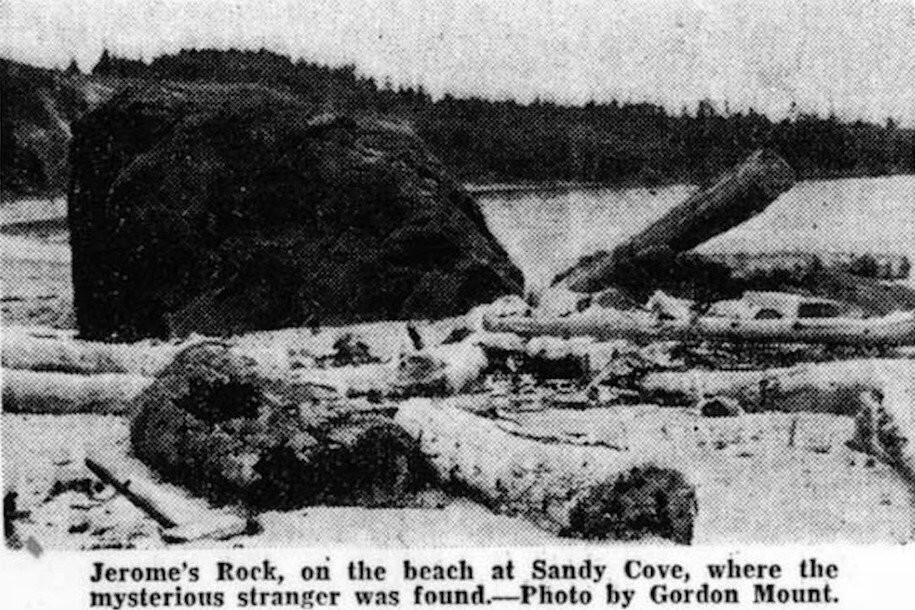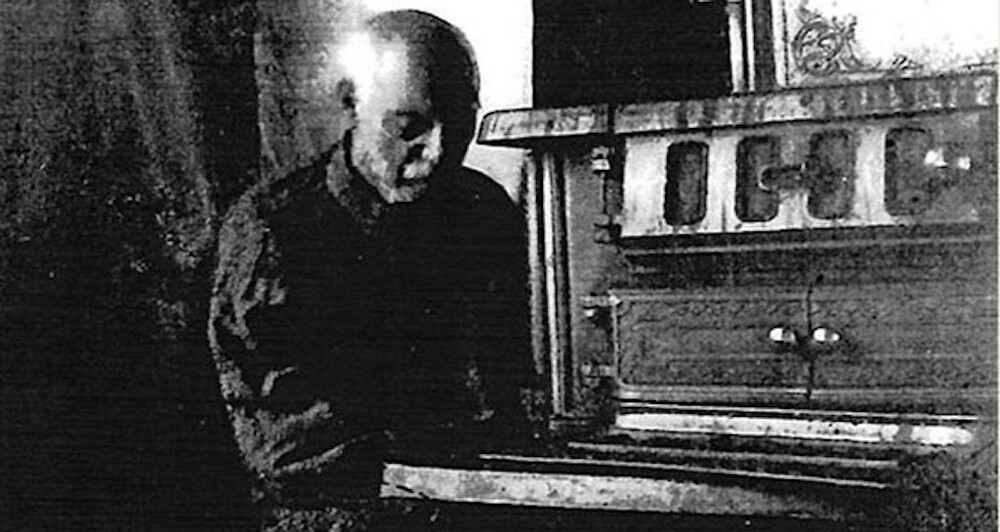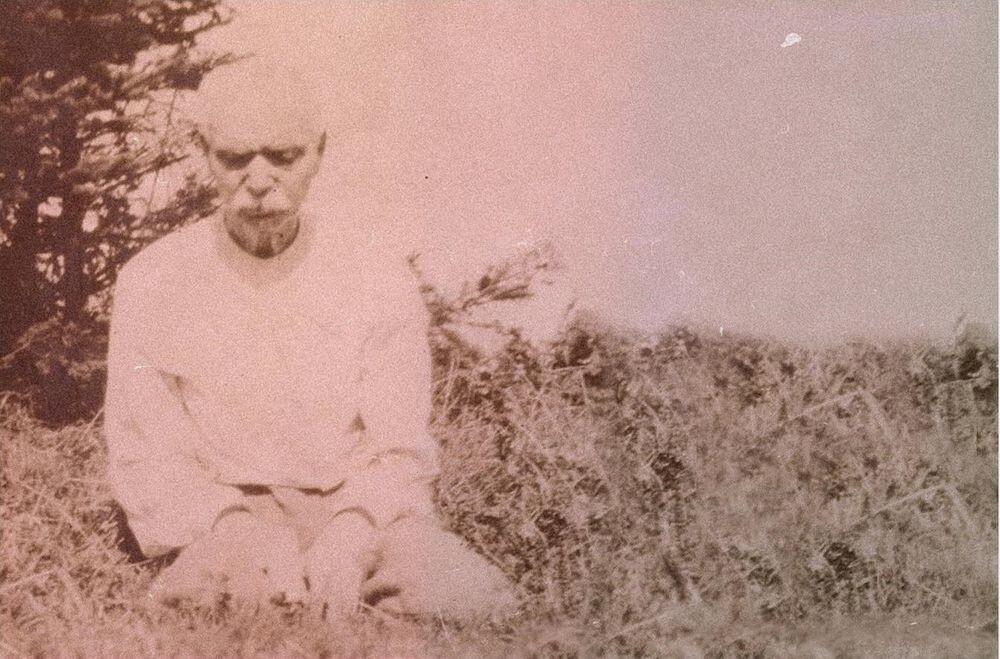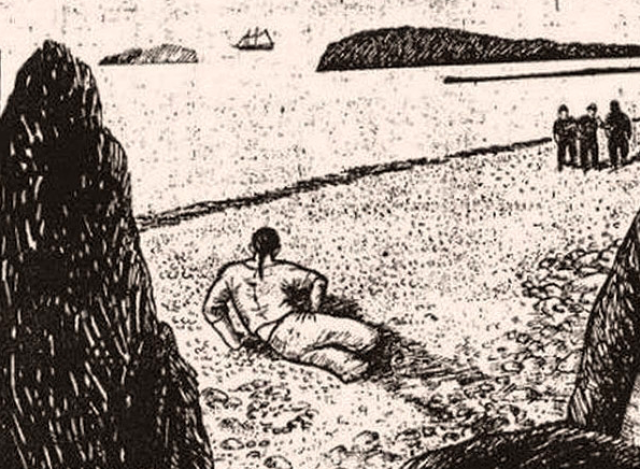Sometimes riddles that have nothing to do with mysticism, but turn out to be completely ordinary and everyday, can leave a much more indelible impression on people’s minds. 
In Nova Scotia, the story of a mysterious legless man nicknamed Jerome, who one day in 1863 appeared in Sandy Cove, is passed down from mouth to mouth. He was found one September morning sitting in front of a large rock by two fishermen on the beach in the Bay of Fundy. The man clearly suffered from the cold at night and the scorching rays of the sun during the day. Within his reach were a box of cookies, a loaf of bread, and a pitcher of water. The most important and terrible thing is that both of this man’s legs were missing and were cut off above the knees. Upon closer examination, it turned out that the amputation was clearly carried out not by an amateur, but by an experienced surgeon. The still fresh wounds were properly bandaged. It became clear that the stranger had been left on the shore by a passing ship. 
The dying man was taken to the Albright family home in the village of Digby Neck, where he was covered with a blanket and given a hot drink. It turned out that the young man could not speak or understand any of the languages spoken by the villagers, including English, French, Latin, Italian and Spanish. His only way of interacting with others was a low, inarticulate growl. Although at the same time he clearly loved children and was disposed towards children.
The villagers began calling him Jerome because during the first interrogation he muttered something similar to that name.
Jerome's presence in Sandy Cove became the subject of heated discussion, giving rise to a lot of rumors among the townspeople. People were eager to understand who Jerome was and what mysterious circumstances brought him to their shores. Perhaps Jerome was a sailor who tried to start a mutiny and was punished by having his legs cut off. However, his soft, tender, calloused palms suggested that Jerome was not used to physical labor. Another explanation is that he was the heir to a large fortune and was disposed of to make way for someone else who wanted his inheritance. 
After living with the Albrights for several weeks, Jerome was sent to another family, with whom he spent a few more weeks, after which he moved to a neighboring house. He thus became something of a common relative, and the expenses of Jerome's food and clothing were borne by all the inhabitants. In the end, the local Baptist religious community decided that, judging by his appearance, the victim looked like a Catholic. And she sent him to the neighboring French Catholic community of Metegan, to the house of Jean Nicolas. The Nova Scotia government also decided to provide a special allowance of two dollars a week for Jerome's upkeep. Jerome lived in Nikola's house for seven years.
After the death of his wife, Nicola moved to Europe, and Jerome went to live with Dedier and Zebeth Comeau in Saint-Alphonse-de-Claire, near Metegan. The couple used Jerome's relative fame to their advantage by charging entry fees to those wishing to see the mystery man. Jerome lived with them for more than 40 years, until his death on April 15, 1912. During his nearly 50 years in Digby County, Jerome barely spoke. He didn't read or write. When people came to him, he never looked at them. 
Most of the time he looked at the floor. When asked a question, he would make strange muttering noises to show his annoyance. He was never seen making notes with a pen or pencil, and he never attempted to look into a book or read anything. He refused to even look at the pictures. Jerome led a completely passive life, was something like a pet.
After his death, the story of this mysterious man became increasingly intertwined with legends and traditions, as local residents passed it on from generation to generation. Naturally, slightly embellishing and adding new details and details.
Several books were dedicated to this case, and in 1994 a French film about Jerome was released.
According to one version, Jerome was an Italian who worked as a logger in the Chipman area of New Brunswick, across the Bay of Fundy. In 1859, four years before his mysterious appearance in Sandy Cove, an Italian man was walking through the woods in the middle of winter. Perhaps he got lost and fell into the pond. Having difficulty getting out, I made my way to the sawmill, where I spent the night. The next morning he discovered that his legs were so severely frostbitten that the local surgeon found it necessary to immediately amputate both limbs above the knee to save the guy's life. 
When the Italian regained consciousness, he began screaming about his “gamba,” which means “legs” in Italian. This is how he became known as Gumby.
Gumby proved to be too much of a burden for the locals. There were rumors that the captain of a passing schooner had been paid to transport him. Perhaps the captain went to the opposite side of the bay in Nova Scotia and abandoned the poor fellow on the beach at Sandy Cove. This story, which explains Jerome's possible origins, was chronicled in the 2008 book Jerome: Unraveling the Mystery of Nova Scotia's Silent Castaway, written by local historian Fraser Mooney Jr. However, Mooney's views on the story have been criticized by some for presenting a story that has no basis in fact. 
Be that as it may, Nova Scotia turned out to be a little paradise for Jerome. The people of Digby Neck and later Metegan cared for him sincerely, and Jerome remained quite calm, if slightly depressed, until his death. It is quite possible that these were the consequences of severe stress.
In 2000, residents of the village of Metegan erected a plaque dedicated to Jerome over a false grave because the real burial site had been lost.
Add your comment
You might be interested in:

























